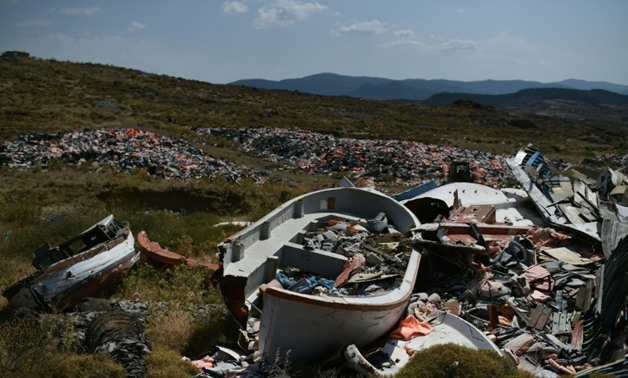
At the height of the influx in 2015, some 5,000 refugees and migrants, mostly from war-torn Syria, were landing on Lesbos's beaches on a daily basis
GREECE - 12 August 2018: Three years ago, the Greek island of Lesbos found itself at the heart of Europe's greatest migration crisis since World War II.
At the height of the influx, some 5,000 refugees and migrants, mostly from war-torn Syria, were landing on the island's beaches on a daily basis.
Hundreds never survived the journey across the Aegean Sea. More than 800 people, including many children, died in 2015 in the Eastern Mediterranean.
The situation quickly reached emergency proportions for beleaguered Lesbos authorities trying to regulate the flow, register the exhausted survivors, and find shelter for them.
Local residents hastened to lend support, providing blankets, clothes and food until the arrival of refugee agencies and volunteer groups.
Three years on, the situation has changed drastically.
An agreement brokered between the European Union and Turkey in March 2016, in which Turkish authorities promised to stop people-smugglers in return for EU aid, has limited the flow.
EU border agency Frontex vessels patrol the waters between Greece and Turkey, as do NATO ships.
Some 35-80 people currently arrive on a daily basis, but even this is enough to keep the island's holding camps near breaking point.
There are over 9,500 refugees and migrants currently on the island, with the main camp of Moria filled to more than double its capacity. Very few are allowed off the island -- mainly the ill and vulnerable -- and there are frequent outbreaks of violence.
Authorities are at pains to keep new arrivals out of the path of tourists. They are allowed to land at secluded beaches and directly transported to camps. The beaches are then quickly cleaned of life jackets, inflatable boats and other debris.
As they lounge in the sun, many visitors may not have an inkling that in the same spot where they have planted their towels and beach umbrellas, thousands of desperate people began a new chapter in their search for safety.

Comments
Leave a Comment